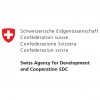Executive Summary
In a commentary / editorial the author argues a certain opinion or viewpoint. When it comes to sanitation and water related challenges there are different viewpoints as to what the underlying causes or the best solutions are. Are centralized systems better than decentralized ones or vice versa? Or community based services better than extending service areas of water utilities?
There is usually a very broad range of solutions, and pros and cons for each one option. At a certain point a journalist or expert may get to the point of expressing their opinion. One format to do this is the commentary or editorial, which is introduced below with guidance on its format and style. A good commentary / editorial can make a difference in the community by provoking a healthy debate of sanitation or water issues and by influencing related decisions in ways the way the author thinks will benefit the management of water resources.
Introduction
A commentary or editorial presents the authors’ own views. Some of those ideas come in response to coverage of water related news, while others may come from convincing arguments or evidences that were presented one of the many meetings held with water users, community leaders, utility staff, politicians or government officials. It aims at convincing the reader about this viewpoint through a well explained and informed argument. Moreover, a commentary or editorial contains all of the information that led the author to come to this opinion.
An editorial should be relatively short, with a length between 300 and 800 words.
How is a commentary / editorial constructed?
Firstly, commentators or editorialists must inform the reader about which issue they are writing. They should provide facts, information and arguments that led them come to the point of view about the given sanitation or water issue. The commentator or editorialist is the well-informed party in this situation and must share the information they have with the reader. Having done all this, they will then draw their final conclusion.
Generally, commentaries and editorials follow three steps:
What is this commentary about? This includes the 5 ‘W’s and one ‘H’ from news reporting: where, what, who, when, why and how.
Why is the author critical? Why is the author praising something? How were the author’s opinions formed? What background information does the author have? As an expert on the topic, or as an informed writer, what does the author know?
What conclusion does the author draw? It could be anything from providing a different perspective, an alternative solution to a water management challenge, detailing ongoing concerns, posing unresolved questions or making a strong condemnation.
How should a commentary / editorial be presented?
It must look different from other reports so that readers can immediately recognise that it is an opinion, rather than fact. This can be done through varying fonts, headlines, special pages, disclaimers or other signifiers.
How is a commentary / editorial written?
The style in which an editorial is written can go from ironic or humorous to polemical and combative – but the style in which it is written must suit the topic and argument. If the style does not suit the subject matter, readers won’t take it seriously.
Checklist
- What point is being made? What conclusion is being drawn?
- Is all the information that is required to support the conclusion contained in the commentary?
- Is it immediately clear to readers, which topic is being discussed?
- Do the argument and the supporting information lead to a good understanding of the conclusion?
- Is the tone of commentary suited to the argument and topic under discussion?
Shortcuts to Journalism: The Basics of Print, Online and Broadcast Reporting
When basic questions about journalism come up, this handbook, written and produced by Media in Cooperation and Transition (MICT), provides clear, brief and precise answers. Shortcuts to Journalism isn’t just for journalists – it’s also helpful for non-journalists. Download the English version here or the Arabic version here.
Schmidt, E., Tirok, M. and Bösch, M. (2016): Shortcuts to Journalism: The Basics of Print, Online and Broadcast Reporting. Berlin, Germany: Media in Cooperation and Transition gGmbH PDFThe New York Times: The Real Future of Clean Water
In this article author David Bornstein focuses on the organisation Charity: Water that has raised $100 million to finance water projects in the developing world.


